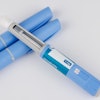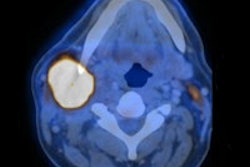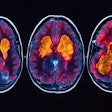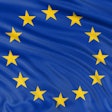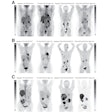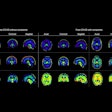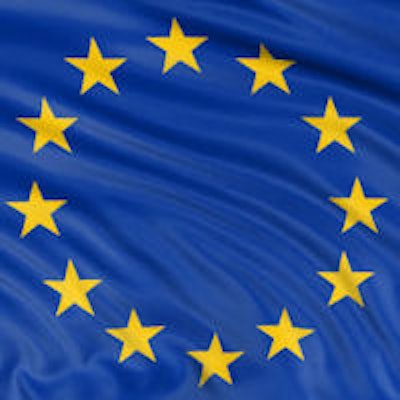
A pan-European dose estimation project has found that doses administered to patients in medical imaging examinations vary widely by country, but are lower than comparable levels reported for the U.S. and Australia.
For 34 countries in Europe, the mean annual dose per capita is about 1 mSv, though variations between countries were as high as tenfold, according to the results of the Dose Datamed 2 (DDM2) project launched by the European Commission, said Ritva Bly from the Radiation and Nuclear Safety Authority of Finland (STUK) in Helsinki.
In this data estimation project covering 34 countries, mean European doses per year per capita came to 1 mSv, compared with about 1.7 mSv in Australia and 3.0 mSv in the U.S., said Bly, a medical physicist at STUK who heads radiation practices regulation for the European authority.
The project arose from concerns in the EU about the lack of standardized dose data available to analyze and compare over time. Data for the survey were taken primarily from national contacts using national sources. The results, recently delivered in draft form to EC officials and presented at ECR 2013, show that in Europe it has been possible to do more justified procedures and avoid unjustified ones, she said.
"But what does the population dose mean and how can you use it?" Bly said. "Is it high or is it low? Is it low [because] we may be better in optimizing procedures, or is it [because] we have not had adequate equipment for state-of-the-art imaging? I don't have an answer to these questions, but it's something the published doses can indicate."
Other results showed that per capita dose from all European countries was 1.05 mSv from x-ray procedures. Including the European Free Trade Association countries -- Norway, Iceland, and Switzerland -- brought the dose up slightly to 1.13 per capita.
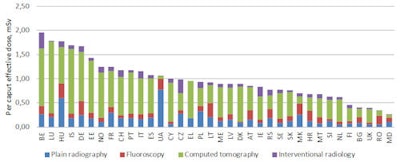 Per-capita effective doses in Europe. All images courtesy of Ritva Bly.
Per-capita effective doses in Europe. All images courtesy of Ritva Bly.As for modalities, the highest average contribution is from CT, at a mean 57% of all exposures across Europe. Plain radiography counted for 19%, fluoroscopy 17%, and interventional radiology 7.5%, but those levels varied widely between countries. In Denmark and Luxembourg, more than 80% of the dose was contributed from CT, she said, while other countries, like the Czech Republic, had less than 40% of their dose coming from CT. CT procedure numbers were relatively low, accounting for 16% of all procedures at most, Bly said.
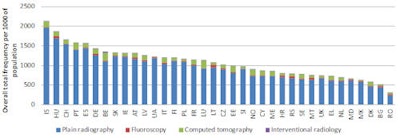 Procedure frequencies -- x-ray figures including dental examinations.
Procedure frequencies -- x-ray figures including dental examinations.Plain radiography, including dental x-rays, was the most common procedure, accounting for about 90% of all procedures across the continent. In Europe, an average of one x-ray per person per year is conducted, she said. Doses have increased per capita across the board since the last European dose survey, the DDMD1 project in 2008. In Denmark, the dose almost doubled, while rising only 6% in Switzerland over the same five-year period.
The mean effective doses varied significantly, Bly said. Chest and thorax doses ranged from 0.014 mSv to 0.26 mSv, but head CT had a smaller range, 3 mSv to 4 mSv, and percutaneous coronary angioplasty (PCTA) ranged only from 6 mSv to 8 mSv, she said. The nuclear medicine contribution represented only 0.2% of the total dose at a mean of 0.36 mSv. Heart and bone exams composed 40% and 36% of all exams, respectively.
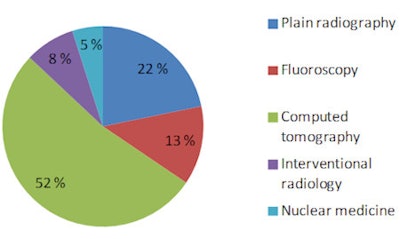 Contribution of the main groups of x-ray procedures and nuclear medicine procedures to the total collective effective dose.
Contribution of the main groups of x-ray procedures and nuclear medicine procedures to the total collective effective dose.Future reports will survey doses more comprehensively, resulting in more accurate information over time, but it's hard to say if it will be higher or lower, Bly said. A draft final report is available here.


